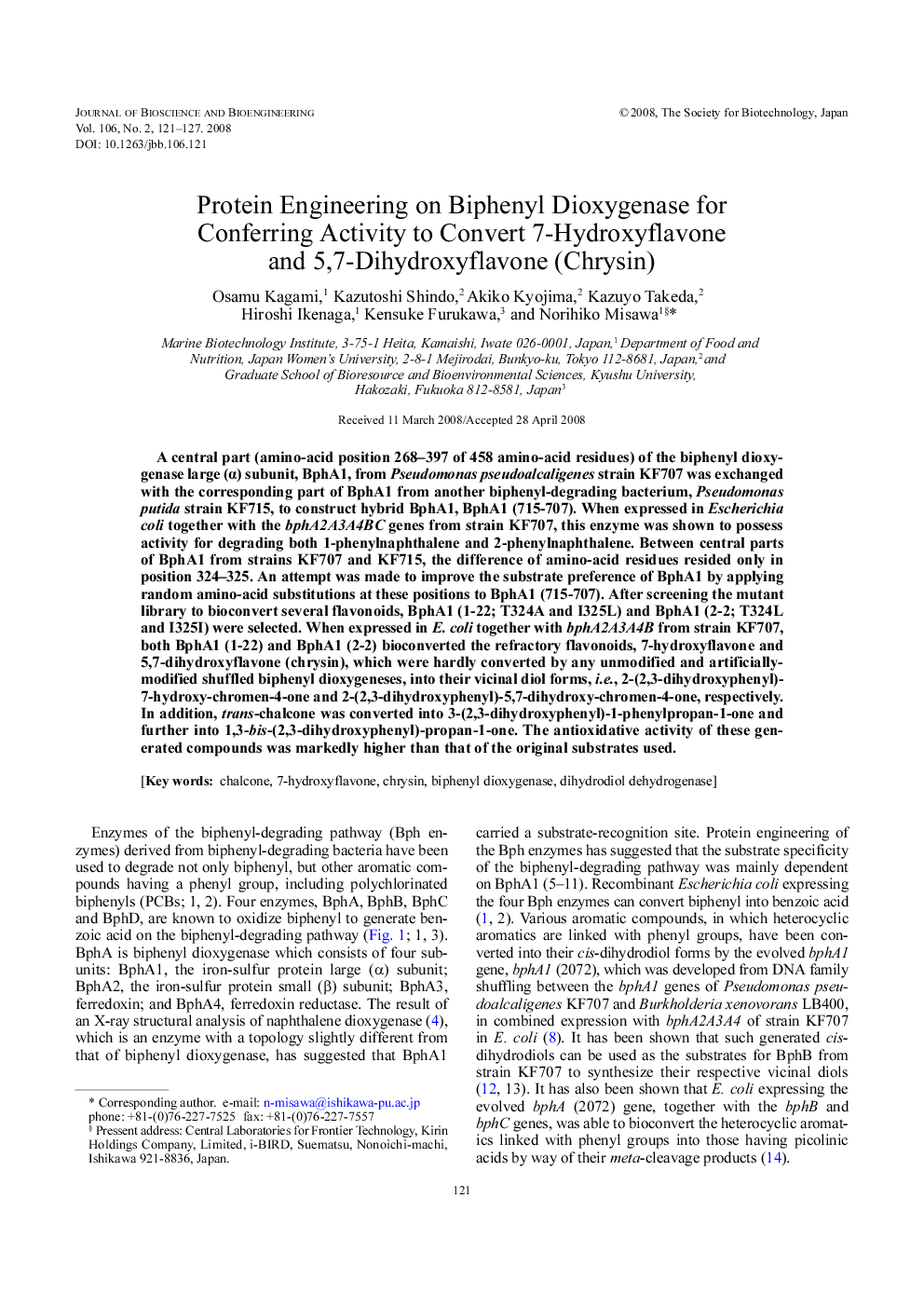| کد مقاله | کد نشریه | سال انتشار | مقاله انگلیسی | نسخه تمام متن |
|---|---|---|---|---|
| 21649 | 43233 | 2008 | 7 صفحه PDF | دانلود رایگان |

A central part (amino-acid position 268–397 of 458 amino-acid residues) of the biphenyl dioxygenase large (α) subunit, BphA1, from Pseudomonas pseudoalcaligenes strain KF707 was exchanged with the corresponding part of BphA1 from another biphenyl-degrading bacterium, Pseudomonas putida strain KF715, to construct hybrid BphA1, BphA1 (715-707). When expressed in Escherichia coli together with the bphA2A3A4BC genes from strain KF707, this enzyme was shown to possess activity for degrading both 1-phenylnaphthalene and 2-phenylnaphthalene. Between central parts of BphA1 from strains KF707 and KF715, the difference of amino-acid residues resided only in position 324–325. An attempt was made to improve the substrate preference of BphA1 by applying random amino-acid substitutions at these positions to BphA1 (715-707). After screening the mutant library to bioconvert several flavonoids, BphA1 (1-22; T324A and I325L) and BphA1 (2-2; T324L and I325I) were selected. When expressed in E. coli together with bphA2A3A4B from strain KF707, both BphA1 (1-22) and BphA1 (2-2) bioconverted the refractory flavonoids, 7-hydroxyflavone and 5,7-dihydroxyflavone (chrysin), which were hardly converted by any unmodified and artificially-modified shuffled biphenyl dioxygeneses, into their vicinal diol forms, i.e., 2-(2,3-dihydroxyphenyl)-7-hydroxy-chromen-4-one and 2-(2,3-dihydroxyphenyl)-5,7-dihydroxy-chromen-4-one, respectively. In addition, trans-chalcone was converted into 3-(2,3-dihydroxyphenyl)-1-phenylpropan-1-one and further into 1,3-bis-(2,3-dihydroxyphenyl)-propan-1-one. The antioxidative activity of these generated compounds was markedly higher than that of the original substrates used.
Journal: Journal of Bioscience and Bioengineering - Volume 106, Issue 2, August 2008, Pages 121–127